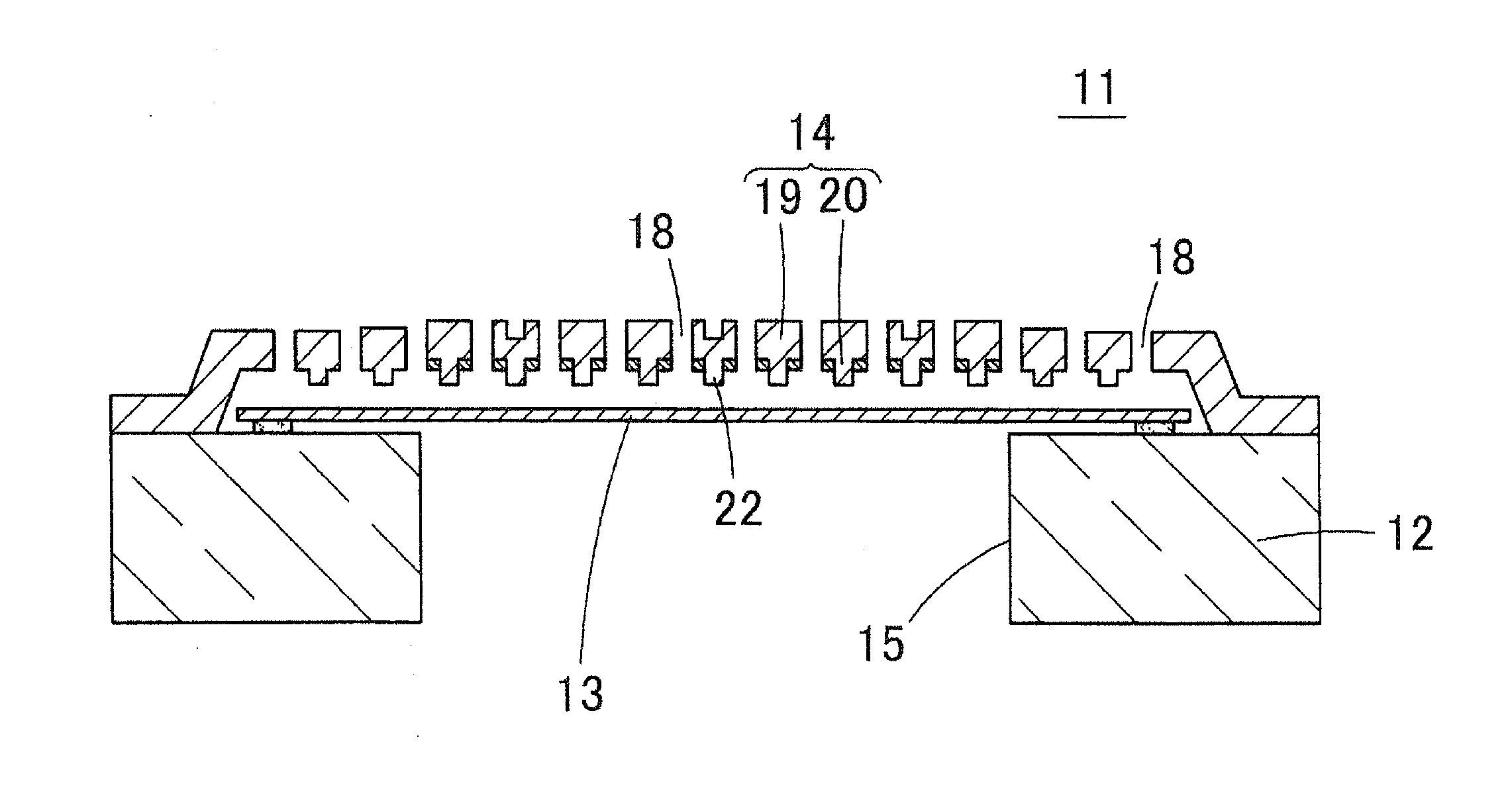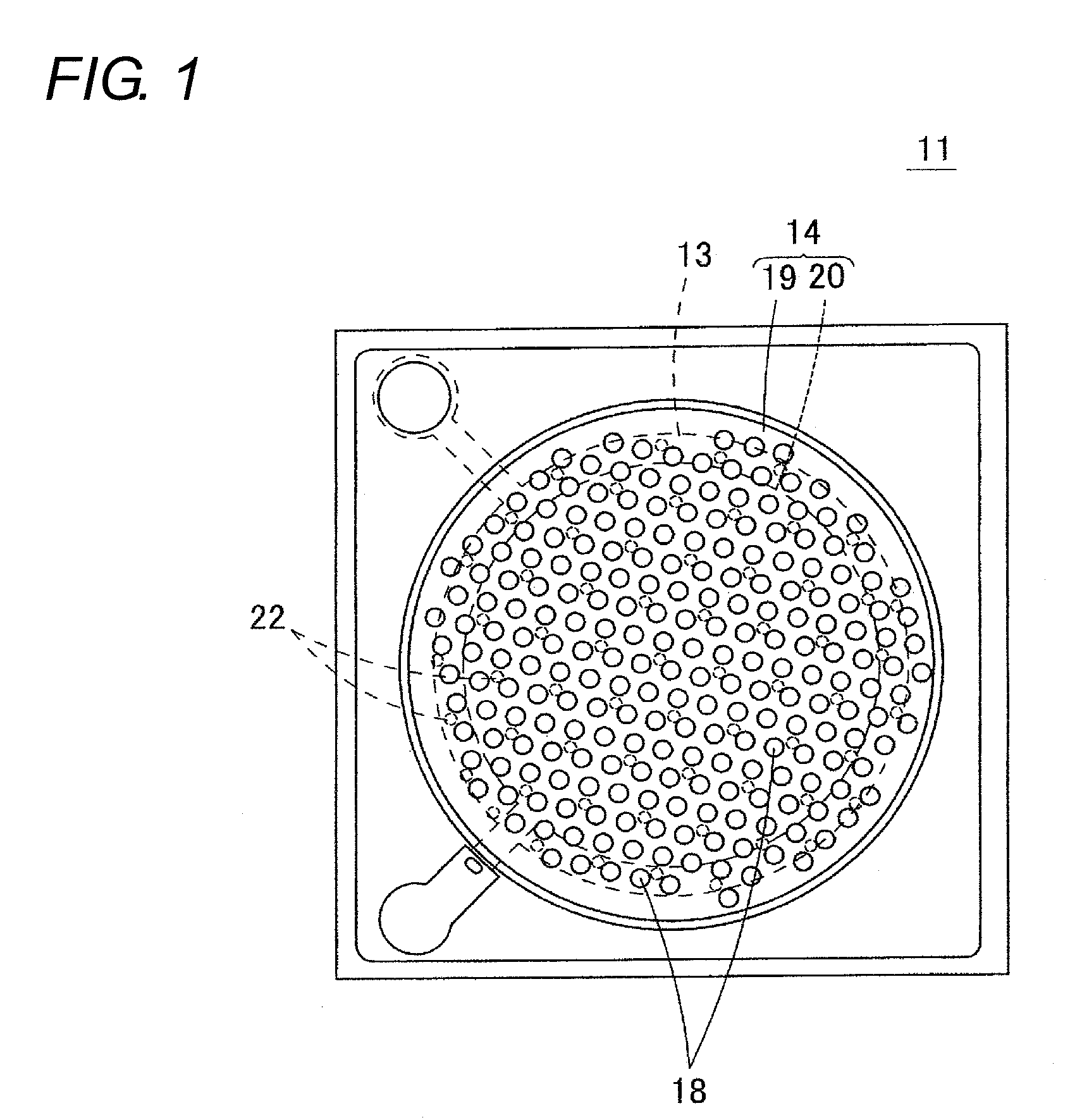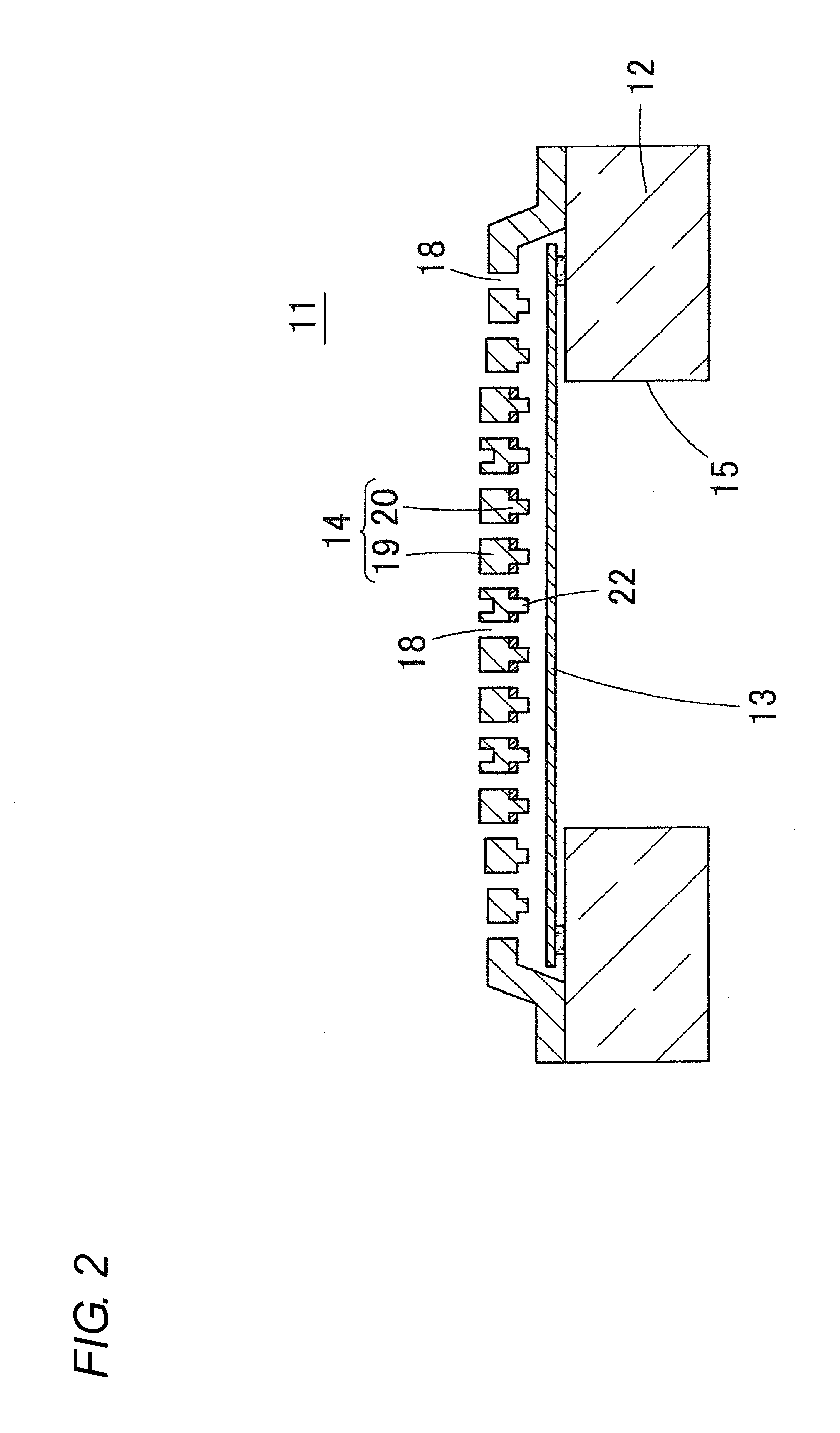Acoustic sensor
a technology of acoustic sensors and electrode films, applied in the field of acoustic sensors, can solve the problems of moisture infiltrating the air gap between the diaphragm and the fixed electrode film, the acoustic vibration cannot be detected by the acoustic sensor, and the inability to form
- Summary
- Abstract
- Description
- Claims
- Application Information
AI Technical Summary
Benefits of technology
Problems solved by technology
Method used
Image
Examples
first embodiment
[0042]The structure of an acoustic sensor 31 according to a first embodiment of the present invention will be described with reference to FIGS. 3 to 7. FIG. 3 is a plan view showing the acoustic sensor 31 of the first embodiment. FIG. 4 is a cross-sectional view of the acoustic sensor 31. FIG. 5 is a bottom view of a back plate 14. FIG. 6 is a plan view of a state in which the back plate 14 is removed from the acoustic sensor 31. FIG. 7 is a bottom view of the back plate 14 in which acoustic holes 38 are not shown and only stoppers 42a, 42b are shown.
[0043]The acoustic sensor 31 is a capacitance type element formed using a MEMS technique, where a diaphragm 33 (vibration electrode film) is arranged on an upper surface of a silicon substrate 32 (semiconductor substrate) through an anchor 37, and a back plate 34 is fixed thereon through a microscopic air gap (void), as shown in FIG. 4.
[0044]A back chamber 35 (hollow portion) passing through from a front surface to a rear surface is ope...
second embodiment
[0066]FIG. 11 is a schematic cross-sectional view showing an acoustic sensor 61 according to a second embodiment of the present invention. In the acoustic sensor 31 of the first embodiment, two types of stoppers 42a, 42b having different diameters are arranged on the lower surface of the back plate 34, but three or more types of stoppers having different diameters may be arranged.
[0067]In the acoustic sensor 61 shown in FIG. 11, a stopper 42e having the smallest diameter is arranged at the outermost peripheral area E, a stopper 42d having the second smallest diameter is arranged in an outer peripheral area D on the inner side of the outermost peripheral area E, and a stopper 42c having the largest diameter is arranged in an internal area C on the inner side of the outer peripheral area D at the lower surface of the back plate 34.
third embodiment
[0068]FIG. 12 is a schematic cross-sectional view showing an acoustic sensor 62 according to a third embodiment of the present invention. In the acoustic sensor 31 of the first embodiment, the stoppers 42a, 42b are arranged on the back plate 34, but the stoppers 42a, 42b are arranged on the upper surface of the diaphragm 33 in the acoustic sensor 62 of the third embodiment. In the acoustic sensor 62 as well, the stopper 42b having a small diameter is arranged at the outer peripheral area, and the stopper 42a having a large diameter is arranged in the internal area at the upper surface of the diaphragm 33. As a result, the impact resistance of the acoustic sensor 62 can be enhanced, and at the same time, the sticking of the diaphragm 33 can be prevented in the acoustic sensor 62 as well. In FIG. 12, a hole is formed in the fixed electrode film 40 at the area facing the distal end of the stopper 42a, 42b, so that the upper surface of the diaphragm 33 and the fixed electrode film 40 ar...
PUM
 Login to View More
Login to View More Abstract
Description
Claims
Application Information
 Login to View More
Login to View More - R&D
- Intellectual Property
- Life Sciences
- Materials
- Tech Scout
- Unparalleled Data Quality
- Higher Quality Content
- 60% Fewer Hallucinations
Browse by: Latest US Patents, China's latest patents, Technical Efficacy Thesaurus, Application Domain, Technology Topic, Popular Technical Reports.
© 2025 PatSnap. All rights reserved.Legal|Privacy policy|Modern Slavery Act Transparency Statement|Sitemap|About US| Contact US: help@patsnap.com



